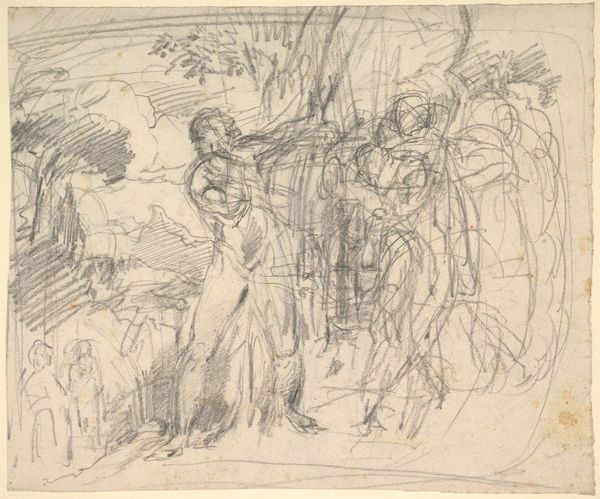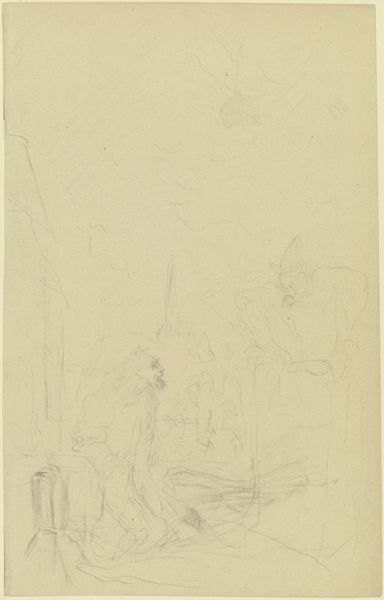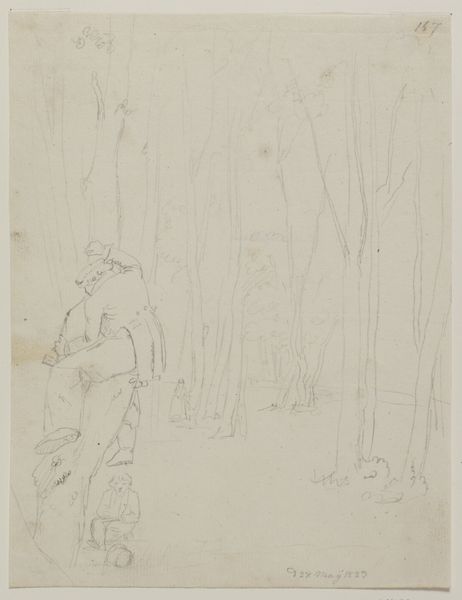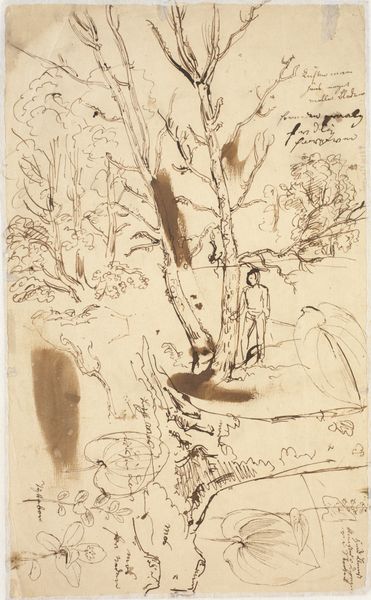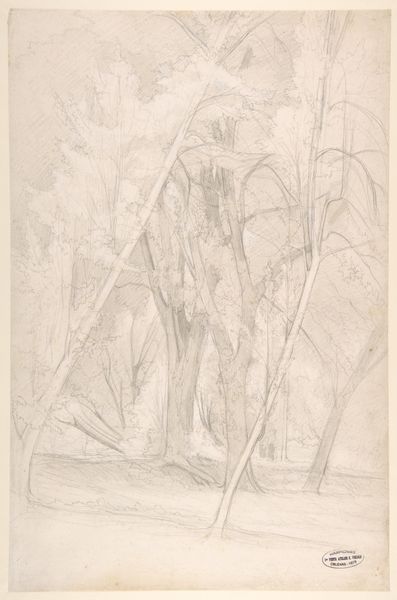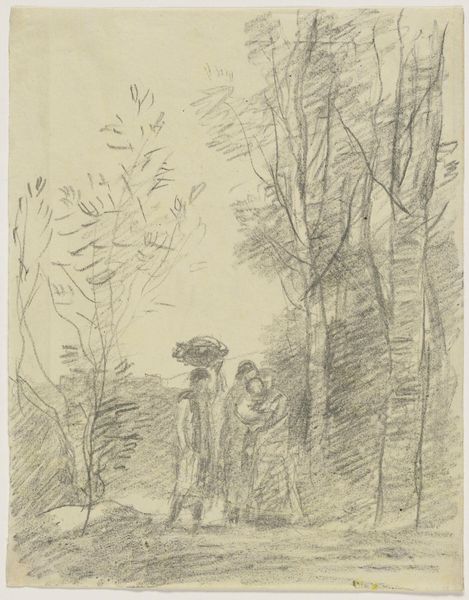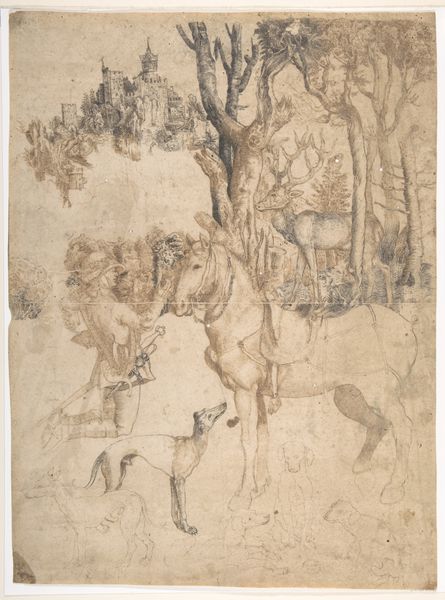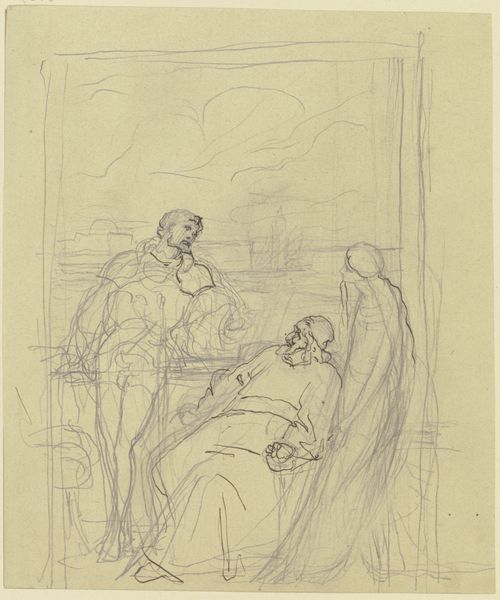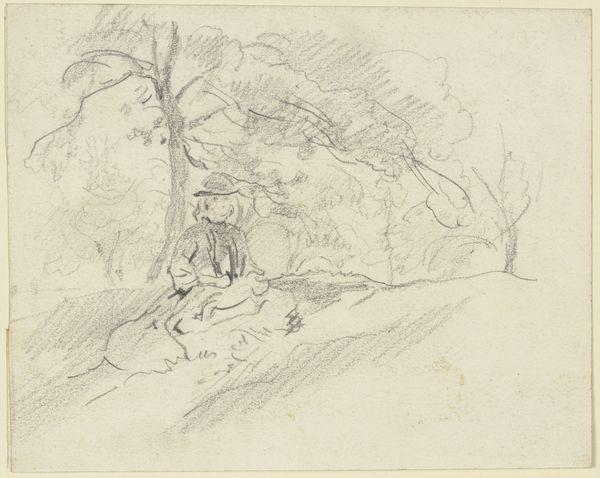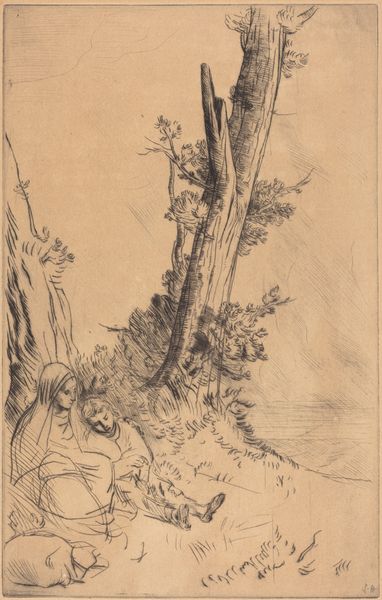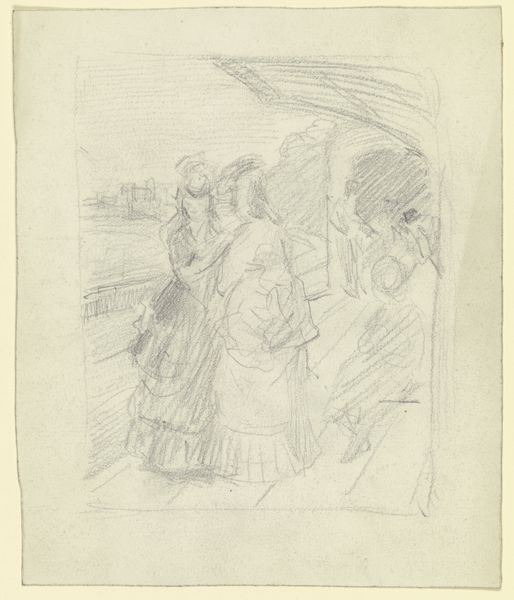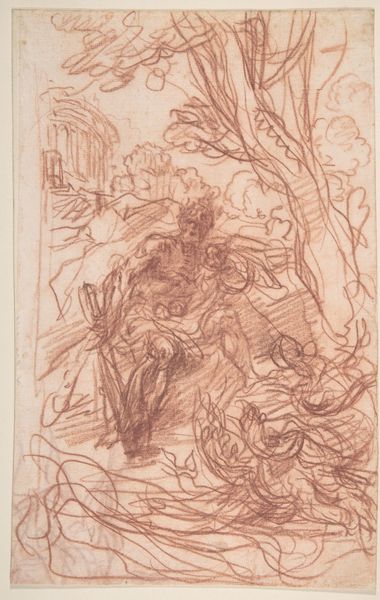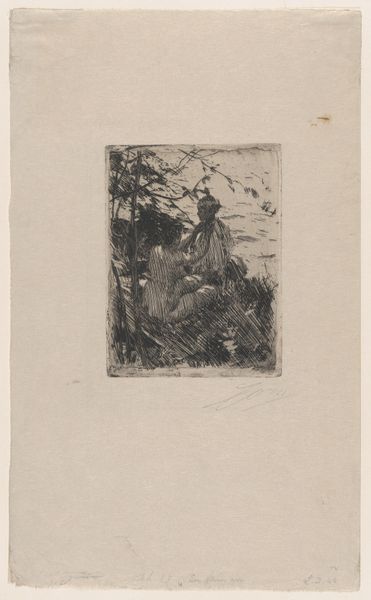
Bandontwerp voor: E.T.A. Hoffmann, Notenkraker en muizenkoning, 1898 1898
0:00
0:00
drawing, pencil
#
drawing
#
fairy-painting
#
art-nouveau
#
pencil sketch
#
landscape
#
figuration
#
pencil
#
symbolism
Dimensions: height 437 mm, width 298 mm
Copyright: Rijks Museum: Open Domain
Curator: Hello! Editor: This is Willem Wenckebach’s pencil drawing, “Bandontwerp voor: E.T.A. Hoffmann, Notenkraker en muizenkoning, 1898,” from 1898. It looks like a preliminary sketch. It evokes this delicate sense of wonder. What strikes you most about this piece? Curator: This sketch is a fascinating entry point into fin-de-siècle anxieties and aspirations, particularly concerning childhood and societal expectations. Fairy tales often act as a canvas for exploring gender roles. Does this illustration perpetuate traditional roles or subvert them in any way? Editor: Well, I see a girl being led into a forest. That makes me think about innocence and vulnerability, so it seems pretty traditional. Curator: Exactly. But consider the context: Art Nouveau flourished during a period of rapid industrialization and social change. The rediscovery of the fairy tale and folk traditions were about a collective desire for a simpler time. What tensions can you detect in the image itself, such as in the depiction of the figures, between reality and fantasy? Editor: I see what you mean. The sketchiness kind of emphasizes a sense of unease, especially given that the trees are sort of looming in the background. Curator: Right, so it goes beyond a simple illustration. What are some possible interpretations of why Wenckebach might have emphasized that element of the story? Editor: Hmm...maybe it suggests that even within fantasy, there’s a darker side to explore. Fairy tales can represent not only hope but hidden fears. Thank you! This made me look at it in a whole new light.
Comments
No comments
Be the first to comment and join the conversation on the ultimate creative platform.
